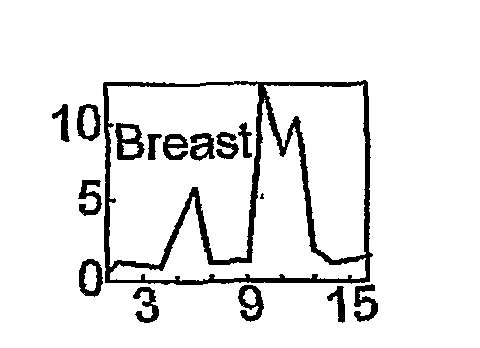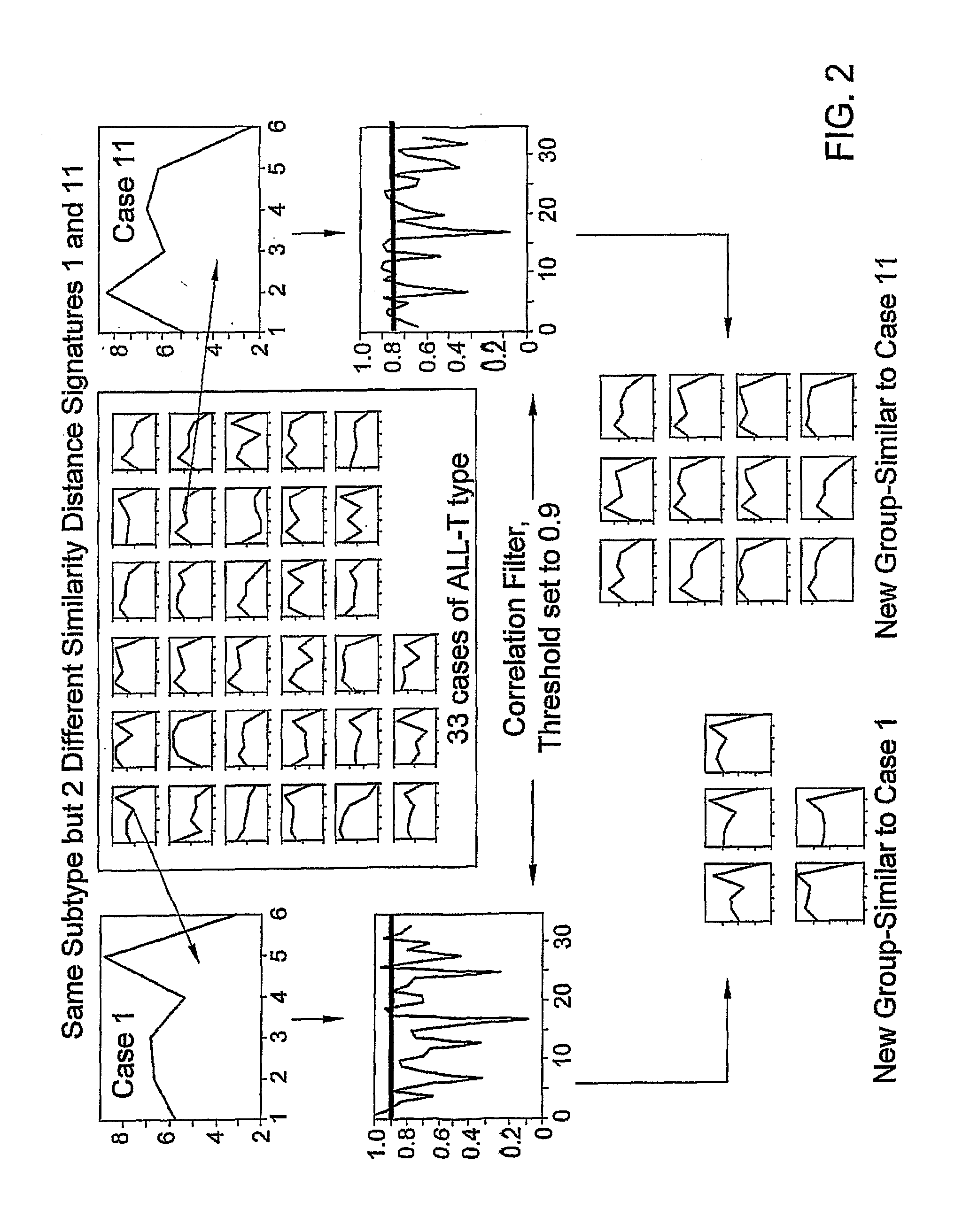System And Method For Classifying A Body Tissue Sample
a body tissue and sample technology, applied in the field of diagnostic systems and methods, can solve problems such as complicated diagnosis
- Summary
- Abstract
- Description
- Claims
- Application Information
AI Technical Summary
Benefits of technology
Problems solved by technology
Method used
Image
Examples
Embodiment Construction
[0053] The invention was tested on tumor gene expression data available from the multiclass cancer diagnosis set of Ramaswamy et al. (2001). As disclosed in that publication, sixteen different cancer classes were defined (K=16). For each class k, a level of gene expression for each of 16,063 genes was obtained for each of 10 tissue samples known to belong to the class (N=16,063). The databases Xk were obtained using two microarrays made by Affymetrix—the M6800 and the SK35. Of the 16 different cancer types, 2 included sub-type data: leukemia consisting of 3 groups—AML, ALL B-type, ALL T-type and lymphoma consisting of 2 groups, (Lymph Folli and Lymph Large_B).
[0054] For each class k, 9 microarrays were selected from among the 10 for use in the database Xk (Mk=9). 9 out of the 10 microarrays were used in each set, and when a tested microarray to be classified {tilde over (X)} was included among the 9, it was replaced with the tenth microarray. For each class k, the metric μk=({tilde...
PUM
| Property | Measurement | Unit |
|---|---|---|
| Distance | aaaaa | aaaaa |
| Correlation function | aaaaa | aaaaa |
| Gene expression profile | aaaaa | aaaaa |
Abstract
Description
Claims
Application Information
 Login to View More
Login to View More - R&D
- Intellectual Property
- Life Sciences
- Materials
- Tech Scout
- Unparalleled Data Quality
- Higher Quality Content
- 60% Fewer Hallucinations
Browse by: Latest US Patents, China's latest patents, Technical Efficacy Thesaurus, Application Domain, Technology Topic, Popular Technical Reports.
© 2025 PatSnap. All rights reserved.Legal|Privacy policy|Modern Slavery Act Transparency Statement|Sitemap|About US| Contact US: help@patsnap.com



